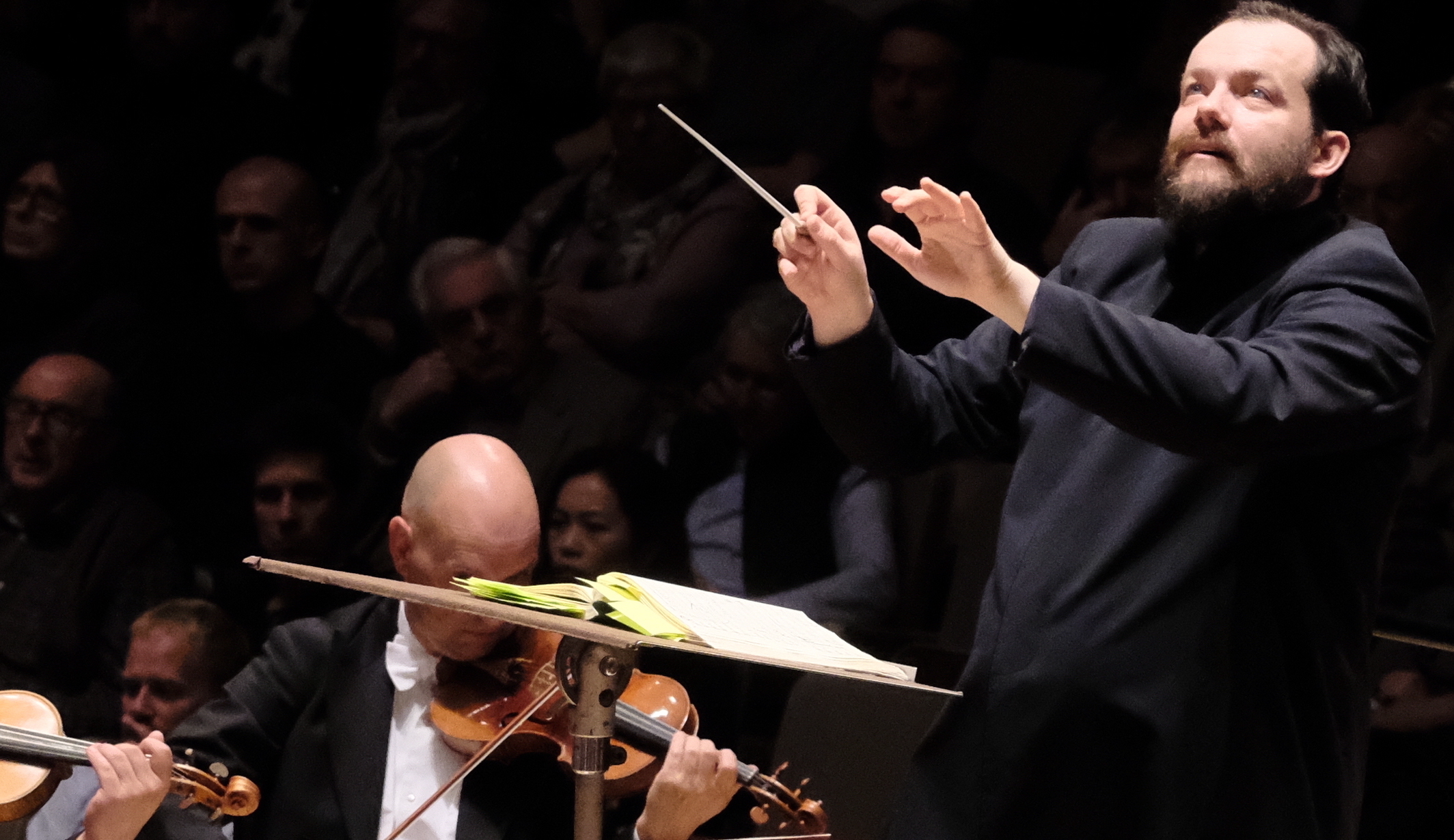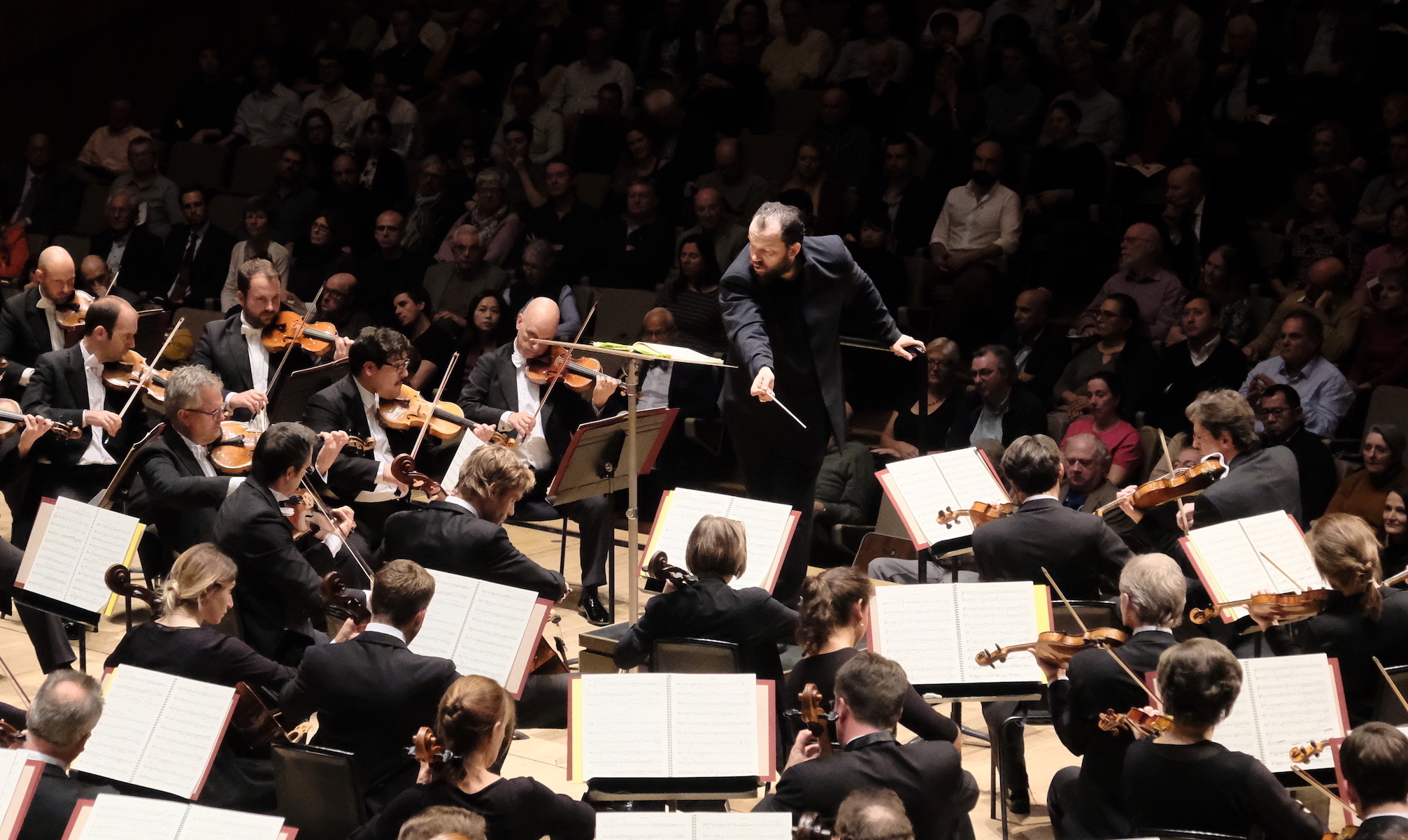Hardenberger, Leipzig Gewandhaus Orchestra, Nelsons, RFH review - new songs for an old glory | reviews, news & interviews
Hardenberger, Leipzig Gewandhaus Orchestra, Nelsons, RFH review - new songs for an old glory
Hardenberger, Leipzig Gewandhaus Orchestra, Nelsons, RFH review - new songs for an old glory
The Saxon legends shine as glorious trumpets sound
During his quarter-century in charge of the Gewandhausorchester in Leipzig, the late Kurt Masur nobly held out a musical hand of friendship and collaboration from the other side of the Iron Curtain.
For all his versatility as a conductor, Masur’s tenure confirmed the Gewandhaus’s reputation as a sort of gorgeous time-capsule, a plush and refined vehicle that might whisk you back to a fabled golden age of German orchestral sound. This, after all, is the 275-year-old city band that Mendelssohn, Nikisch, Furtwängler and Walter all led, and that premiered works by Beethoven, Wagner and Brahms.
Their first autumn outing (of two) at the Royal Festival Hall, however, never overplayed tradition-for-tradition’s-sake. The Latvian maestro Andris Nelsons, who has added the time-honoured post of Gewandhaus Kapellmeister to his job directing the Boston Symphony Orchestra, coupled Mahler’s Fifth Symphony with a fascinating opener. This was the 1954 trumpet concerto by Bernd Alois Zimmermann, entitled “Nobody knows de trouble I see” and inspired by the African-American spiritual of that name.
Hardenberger began with a slow, muted bluesy growl. As the texture thickened and the pace quickened, big-band stylings joined a densely eclectic orchestral framework that already put Baroque and Serialist elements in play. Zimmermann immerses the “spiritual” components of the piece into a rich modernist stock rather than import them as faithful citations – say, as Tippett does in the choruses of A Child of Our Time – but neither does he simply pay trumpet lip-service to his sources. With the saxophone quartet, guitar and Hammond organ on top, walking bass lines saluted Ellington or Basie. Meanwhile, the trumpet’s moody journey at times invoked the contemporary be-bop mastery of Parker and Gillespie. Harlem came to Darmstadt, and the results – with Hardenberger’s lonesome-sounding trumpet their soulful and yearning advocate – convinced. Did I hear a mambo begin to form in the depths of the rhythm section? Would Boulez have approved? And, I wondered, did Miles Davis know about this work?
Zimmermann certainly doesn’t outstay his welcome; this truncated first half lasted no more than a quarter of an hour. After the interval, Nelsons (pictured above and below by Mark Allan) compensated with a generous, exhilarating Mahler Five that showcased the sumptuous glow and sheen of the Leipzig sound. At the same time, the Gewandhaus avoided any plumply-upholstered heaviness. They gave us litheness and agility as well as lustre and heft. The opening theme of the first-movement funeral march continued the brassy glories of the evening, courtesy of the warm-toned principal trumpet, Jonathan Müller. The winds commanded a proper measure of village-band tipsiness, as revellers lurch into the funeral, and the massed horns throughout shone with a ravishing, thoroughbred radiance. 
Thanks to the blazing horn and trumpet colours of the Gewandhaus, this looked set fair to be a night of brassy triumph. The Adagietto somewhat restored the balance for the strings, gloriously deep and rich but also refined and free of schmaltz. Nelsons did not hang about; his Adagietto came home in nine minutes, compared to the languorous dawdling of 12 or 13 heard in some older recordings of the Fifth. In the finale, the whole band managed to sound mischievous as well as delirious; bucolic and playful more than ecstatic. Leipzig’s, and Nelsons’, Mahler never quite loses a sense of proportion. If the closing passages roared and soared, they did so in the best of taste; if this was not quite transformative, revelatory Mahler, it showed how a great and secure orchestral tradition can absorb this once-outrageous music with supreme self-confidence. Congratulations to the Southbank on their new Leipzig liaison. And let’s pray that no political madness frays this bond.
rating
Share this article
The future of Arts Journalism
You can stop theartsdesk.com closing!
We urgently need financing to survive. Our fundraising drive has thus far raised £49,000 but we need to reach £100,000 or we will be forced to close. Please contribute here: https://gofund.me/c3f6033d
And if you can forward this information to anyone who might assist, we’d be grateful.

Subscribe to theartsdesk.com
Thank you for continuing to read our work on theartsdesk.com. For unlimited access to every article in its entirety, including our archive of more than 15,000 pieces, we're asking for £5 per month or £40 per year. We feel it's a very good deal, and hope you do too.
To take a subscription now simply click here.
And if you're looking for that extra gift for a friend or family member, why not treat them to a theartsdesk.com gift subscription?
more Classical music
 Jansen, LSO, Pappano, Barbican review - profound and bracing emotional workouts
Great soloist, conductor and orchestra take Britten and Shostakovich to the edge
Jansen, LSO, Pappano, Barbican review - profound and bracing emotional workouts
Great soloist, conductor and orchestra take Britten and Shostakovich to the edge
 Jakub Hrůša and Friends in Concert, Royal Opera review - fleshcreep in two uneven halves
Bartók kept short, and a sprawling Dvořák choral ballad done as well as it could be
Jakub Hrůša and Friends in Concert, Royal Opera review - fleshcreep in two uneven halves
Bartók kept short, and a sprawling Dvořák choral ballad done as well as it could be
 Hadelich, BBC Philharmonic, Storgårds, Bridgewater Hall, Manchester review - youth, fate and pain
Prokofiev in the hands of a fine violinist has surely never sounded better
Hadelich, BBC Philharmonic, Storgårds, Bridgewater Hall, Manchester review - youth, fate and pain
Prokofiev in the hands of a fine violinist has surely never sounded better
 Monteverdi Choir, ORR, Heras-Casado, St Martin-in-the-Fields review - flames of joy and sorrow
First-rate soloists, choir and orchestra unite in a blazing Mozart Requiem
Monteverdi Choir, ORR, Heras-Casado, St Martin-in-the-Fields review - flames of joy and sorrow
First-rate soloists, choir and orchestra unite in a blazing Mozart Requiem
 Cho, LSO, Pappano, Barbican review - finely-focused stormy weather
Chameleonic Seong-Jin Cho is a match for the fine-tuning of the LSO’s Chief Conductor
Cho, LSO, Pappano, Barbican review - finely-focused stormy weather
Chameleonic Seong-Jin Cho is a match for the fine-tuning of the LSO’s Chief Conductor
 Classical CDs: Shrouds, silhouettes and superstition
Cello concertos, choral collections and a stunning tribute to a contemporary giant
Classical CDs: Shrouds, silhouettes and superstition
Cello concertos, choral collections and a stunning tribute to a contemporary giant
 Appl, Levickis, Wigmore Hall review - fun to the fore in cabaret and show songs
A relaxed evening of light-hearted fare, with the accordion offering unusual colours
Appl, Levickis, Wigmore Hall review - fun to the fore in cabaret and show songs
A relaxed evening of light-hearted fare, with the accordion offering unusual colours
 Lammermuir Festival 2025, Part 2 review - from the soaringly sublime to the zoologically ridiculous
Bigger than ever, and the quality remains astonishingly high
Lammermuir Festival 2025, Part 2 review - from the soaringly sublime to the zoologically ridiculous
Bigger than ever, and the quality remains astonishingly high
 BBC Proms: Ehnes, Sinfonia of London, Wilson review - aspects of love
Sensuous Ravel, and bittersweet Bernstein, on an amorous evening
BBC Proms: Ehnes, Sinfonia of London, Wilson review - aspects of love
Sensuous Ravel, and bittersweet Bernstein, on an amorous evening
 Presteigne Festival 2025 review - new music is centre stage in the Welsh Marches
Music by 30 living composers, with Eleanor Alberga topping the bill
Presteigne Festival 2025 review - new music is centre stage in the Welsh Marches
Music by 30 living composers, with Eleanor Alberga topping the bill
 Lammermuir Festival 2025 review - music with soul from the heart of East Lothian
Baroque splendour, and chamber-ensemble drama, amid history-haunted lands
Lammermuir Festival 2025 review - music with soul from the heart of East Lothian
Baroque splendour, and chamber-ensemble drama, amid history-haunted lands
 BBC Proms: Steinbacher, RPO, Petrenko / Sternath, BBCSO, Oramo review - double-bill mixed bag
Young pianist shines in Grieg but Bliss’s portentous cantata disappoints
BBC Proms: Steinbacher, RPO, Petrenko / Sternath, BBCSO, Oramo review - double-bill mixed bag
Young pianist shines in Grieg but Bliss’s portentous cantata disappoints
